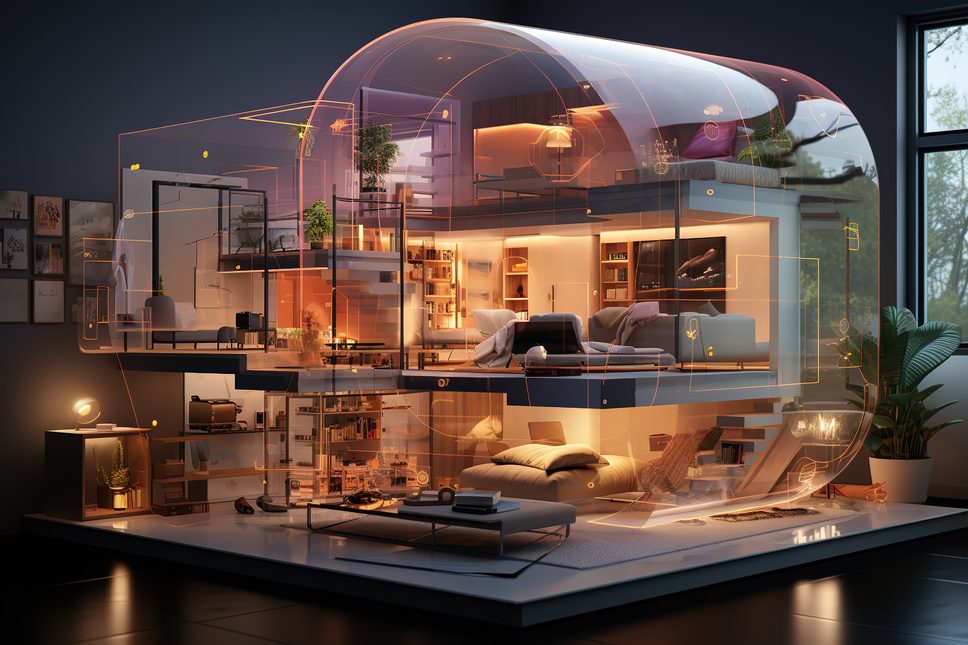The Role of Technology in Modern Interior Design: Enhancing Creativity and Efficiency
The interior design industry has always been at the core of innovation, merging art and science into beautiful and functional spaces. Technology has become a game-changer over the last few years, with a radical change in how designers approach their work and work with clients. From Virtual Reality and Augmented Reality to smart home integration and sustainable design tools, technology is enhancing creativity, improving efficiency, and opening new possibilities for interior designers.
Virtual Reality (VR) and Augmented Reality (AR)
Virtual reality (VR) and augmented reality (AR) have changed how designers engage with and represent their work. Advanced visualization tools place 3D simulation in the palm of a designer’s hand. Designers can present their clients with lifelike, 3D simulations of their projects. VR enables clients to virtually walk through their future home or office, which helps them more clearly understand the design concepts and make more informed decisions. AR displays digital information in the actual environment, displaying to the client how the furniture, decor, and other elements will look in their actual space. Not only does this improve client engagement and involvement, but it also lowers the chance of misunderstandings and revisions.
3D Modeling and Rendering Software
3D modeling and rendering software have become the mainstay for interior designers. Programs like AutoCAD, SketchUp, and 3ds Max enable designers to create design plans with exacting detail and accuracy. These tools help in visualizing complex structures, experimenting with different layouts, and ensuring precise measurements. High-quality renderings provide realistic images of the final design, improving client communication and approval rates. By allowing designers to see the interplay of colors, textures, and lighting, these tools significantly enhance the design process, making it more efficient and creative.
Smart home technology is increasingly turning into part of the fabric of modern interior design. The addition of features like automated lighting, climate control, security, and smart appliances can vastly improve the usability of a space. Technology enables the smooth integration of these features in a space, providing centralized control via one’s smartphone or voice assistants. Not only does it add a level of convenience and luxury, but it can also save energy and ensure more security in a home to make it more intelligent and reactive to its occupants.
Sustainable Design Tools
Sustainability is an important consideration in today’s interior design, and technology is really leading the way toward environmentally friendly solutions. Advanced software tools provide designers with the selection of sustainable materials, optimization of energy usage, and the production of environmentally responsible designs. For instance, tools for the analysis of energy consumption patterns and provision of energy-efficient alternatives can be very important for reducing the carbon footprint of a building. In addition, technology helps find materials that have been recycled and upcycled, thus contributing to a more sustainable design process. By using these tools, designers are able to design more beautiful spaces that are environmentally conscious.
Case Studies
Example 1: Residential Project
In a recent residential project, a design firm used VR in order to present its vision to the clients. The clients virtually walked through the proposed design, were able to make changes in real-time, and made selections for finishes that resulted in higher satisfaction and fewer revisions. With 3D modeling, implementation was accurate, and smart home features such as automated blinds and a voice-controlled lighting system were seamlessly integrated, increasing the functionality of the home.
Example 2: Commercial Space
Another design firm, in the design of a commercial office space, used AR to present different layout options and furniture arrangements. This type of interactive approach let business owners see the effect of each decision they were to make, thus coming up with a highly customized space. Sustainable design tools provided a selection of eco-friendly materials and energy-efficient lighting, which aligned with the company’s commitment toward being sustainable.
Challenges and Solutions
Despite many of the benefits, there are challenges that interior designers face when incorporating technology into their design. High costs of advanced tools and software, the learning curve associated with new technologies, and the need to maintain data privacy and security are among the common challenges. Designers could start with cost-effective solutions and later invest in more sophisticated tools as the need arises. This would help the staff overcome the learning curve by providing them with training and continuous learning opportunities. Furthermore, the adoption of robust data protection measures ensures that client data remains secure.
Future Trends
Technological changes will continue shaping the interior design industry in the future. More developments in AI-driven design tools are going to emerge, which will be capable of providing user preference-based personalized design recommendations. More advanced VR and AR will provide even more immersive and interactive design experiences. Thirdly, the integration of IoT with cutting-edge AI will produce homes that respond to and anticipate the needs of their occupants, enabling smart living.
Conclusion
Undeniably, technology transforms the interior design industry into something more creative, efficient, and responsive to client needs. With these technological advances, interior designers can expand their creativity and deliver exceptional results.
At vNex, we ensure that we support interior designers with our tech-powered solutions to innovate and grow in the rapidly changing field. Have a look at the range of tools and services we have for you and see how we can help you unlock the power of technology for your next design project.

